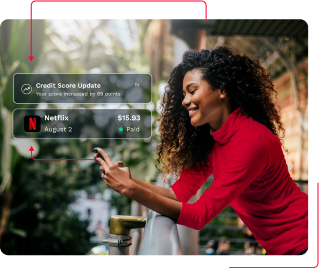- This topic has 1 reply, 1 voice, and was last updated 1 year, 12 months ago by
 Team StellarFi.
Team StellarFi.
-
AuthorPosts
-
December 20, 2023 at 3:18 pm #28320
Geoff Massanek
ModeratorDecember 20, 2023 at 3:22 pm #28347 Team StellarFiKeymaster
Team StellarFiKeymasterMortgage insurance is one of the expenses you need to account for when considering applying for a mortgage. This protects you in case of a home loan default. Private mortgage insurance (PMI) for conventional loans (not government-backed) allows you to make a less than 20% down payment because lenders insist on private mortgage insurance as protection against loan default. You don’t have to pay a PMI if you made a down payment of more than 20%.
Mortgage lenders also include a mortgage clause in your home insurance policy to protect mortgage investors and it is an extra monthly expense apart from the loan payment you have to account for. Some lenders may include the mortgage insurance amount in your monthly mortgage payments automatically. The insurance company depends solely on your lender, so you cannot choose your own insurance company or plan, but you can ask for a quote before finalizing the deal.
Depending on your type of insurance, you may annually pay anywhere from 0.1 to 1% of the home loan amount with PMI. The PMI depends on your credit score, home value, your loan-to-value (the amount of loan to the actual value of your home) ratio, insurance your lender needs, whether it is a refundable premium, and other factors your lender decides. Your premium is annually recalculated, reducing how much you pay each year as you pay off your principal.
There are three kinds of mortgage insurance: borrower-paid mortgage insurance, lender-paid mortgage insurance, and FHA mortgage insurance premium.
- Borrower-paid mortgage insurance: This is the most common type of mortgage insurance. BPMI is usually included in your monthly home loan payment. You’ll pay around 0.5-1% of your loan amount as PMI which could come up to $83-$166/month ($1000-2000/year) for the average U.S. homeowner.
If you reach more than 20% of your home value equity, you can cancel your PMI. Generally, for single-family homes, this happens when you’ve reached a 78% loan-to-value ratio (about 15 years in a 30 year-mortgage).
- Lender-paid mortgage insurance: Here, the lender initially pays your mortgage insurance but for a slightly higher mortgage rate. The increase could range anywhere between -.25% to 0.5% more compared to BPMI. Your monthly payments will be lesser and you’ll have a lower down payment because you don’t need to put down 20% with this insurance. You cannot cancel LMPI because it is part of your monthly loan payments throughout your mortgage term.
Federal Housing Administration (FHA) mortgage insurance: This insurance is for FHA loans meant for first-time buyers. These loans require a mortgage insurance premium (MIP). You pay the mortgage insurance for the duration of your loan if you’ve made a down payment of less than 10%. You pay an upfront mortgage insurance premium (about 1.75% of the base loan amount) and an annual mortgage insurance which is 0.45 – 1.05% of the base loan amount.
Note: Mortgage insurance is different from homeowner’s insurance which protects homeowners in case of home damage or stolen property. Mortgage insurance protects lenders in case of borrower loan default. You can get a mortgage for a lower down payment if you have mortgage insurance.
-
AuthorPosts
- You must be logged in to reply to this topic.
